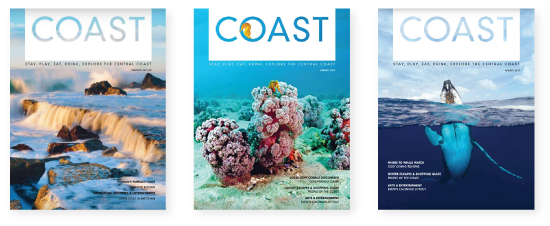As recently as the 1990s, the koala populations in Brisbane Water National Park and around Pearl Beach were so significant they were considered the most important koala populations in NSW from the Victorian border all the way north to Port Stephens.
Since that time, a number of bushfires have devastated the koala habitats: first there was the early 1990s’ fire, which destroyed the Pearl Beach koala colony, followed by the widespread Black Summer fires of 2019–’20. Sightings are so rare now that it made the local news in 2020, when a single koala was seen crossing Patonga Drive near Pearl Beach.
When Europeans first arrived in Australia, the koala population was thought to number in the millions. But when the first official count was done two centuries later, in the 1990s, their numbers in NSW stood at about 30,000, and today this is thought to have fallen by a further third thanks to bushfires, dog and fox predation, loss of habitat and, sadly, roadkill. As a result, there are moves afoot to change the status of the koalas of south-eastern Australia from vulnerable to endangered.
The Central Coast Council has recently conducted an extensive survey of the Coast’s national parks, state forests and even Coastal Open Space reserves to establish where there are koalas. Song meters were used in the spring of 2020 to record the presence of any koalas within a few hundred metres or so.

Photo: Matthias Appel 
Photo: RJ Numbat
You didn’t know koalas had a ‘song’? Unless you’re a female koala, you might rightly call it more of a bellow. In spring, the call of the males is an unmistakable low guttural growl to attract females. The females may call, too, but with much less volume. Mothers also make a range of soft clicking, squeaking and humming sounds to their joeys, but when annoyed will turn up the volume to a gentle grunt. The one sound you don’t want to hear is the heartbreaking, screaming cry they make when stressed.
‘The new acoustics method is proving highly effective at locating koalas in the breeding season, even where their densities are low,’ says Dr Brad Law, principal research scientist in the Forest Science Unit of the NSW Department of Primary Industries.
‘Surveys should be a priority before considering translocations into an area, and existing threats also need to be carefully considered and mitigated before translocating animals,’ he says, adding that, ‘Both Ourimbah State Forest and Brisbane Water National Park still contain potentially suitable habitat for koalas.’
Because koalas are picky feeders, it’s relatively easy to determine where their potential habitats may have been – or could still be. Where there is swamp mahogany, forest red gum, grey gum or Sydney blue gum, you have the koalas’ idea of a gourmet banquet. Historically, koalas would have populated the swamp forests of the Tuggerah floodplain, and around the edges of our coastal lagoons.
It’s thought for an area to be sustainable for koalas, there needs to be between 100 and 400 suitable trees per koala. And when a fire devastates an area, it’s not only the koala’s food source wiped out, but also its home, its territory, its safety from predators such as foxes and feral dogs, and its nursery for the young joeys. And because koalas are very territorial, it’s not an easy matter for them to up sticks and move to the nearest unburnt forest if that already happens to be occupied by a rival population.
In between sleeping 18 to 22 hours a day to conserve energy, koalas are slow breeders too, so that doesn’t help their repopulation. They start to breed from about three years of age and are productive for seven to 10 years, but may not breed every year. That means a female may have six or seven offspring in her entire lifetime, provided that lifespan is not cut short.

Once a young koala reaches sexual maturity, the colony will tell it to skedaddle off to another territory. That’s why you sometimes see a lone koala in an unexpected habitat such as crossing George Downes Drive in Kulnura.
During the Council’s survey, official sightings were recorded in the Mangrove Creek Dam catchment area, and the Watagan Mountains, but this does not mean there are not koalas elsewhere.
Dr Law remembers hearing bellowing koalas in Brisbane Water forests many years ago when he was an undergrad student. ‘Koala populations can be very thinly spread in areas where habitat is poor, and this is a natural phenomenon in some of our forests, especially those growing on infertile sandstone.’
Unofficial sightings by locals have also been noted in Picketts Valley, Bucketty, Cedar Brush Creek, Yarramalong, as well as the lone koalas near Pearl Beach and in Kulnura.
Sightings are important to help in land planning decisions under the new Koala Habitat Protection State Environmental Planning Policy so if you sight a koala, you can help by sending a photo, location, date and time to ‘Koala Survey’ at centralcoast.nsw.gov.au or email [email protected]
You can also help towards making the Central Coast an important habitat again by becoming a volunteer with the Pearl Beach Koala Project through: pearlbeacharboretum.org.au/koala-project
WORDS CATHARINE RETTER
Main photo: courtesy of Central Coast Council






